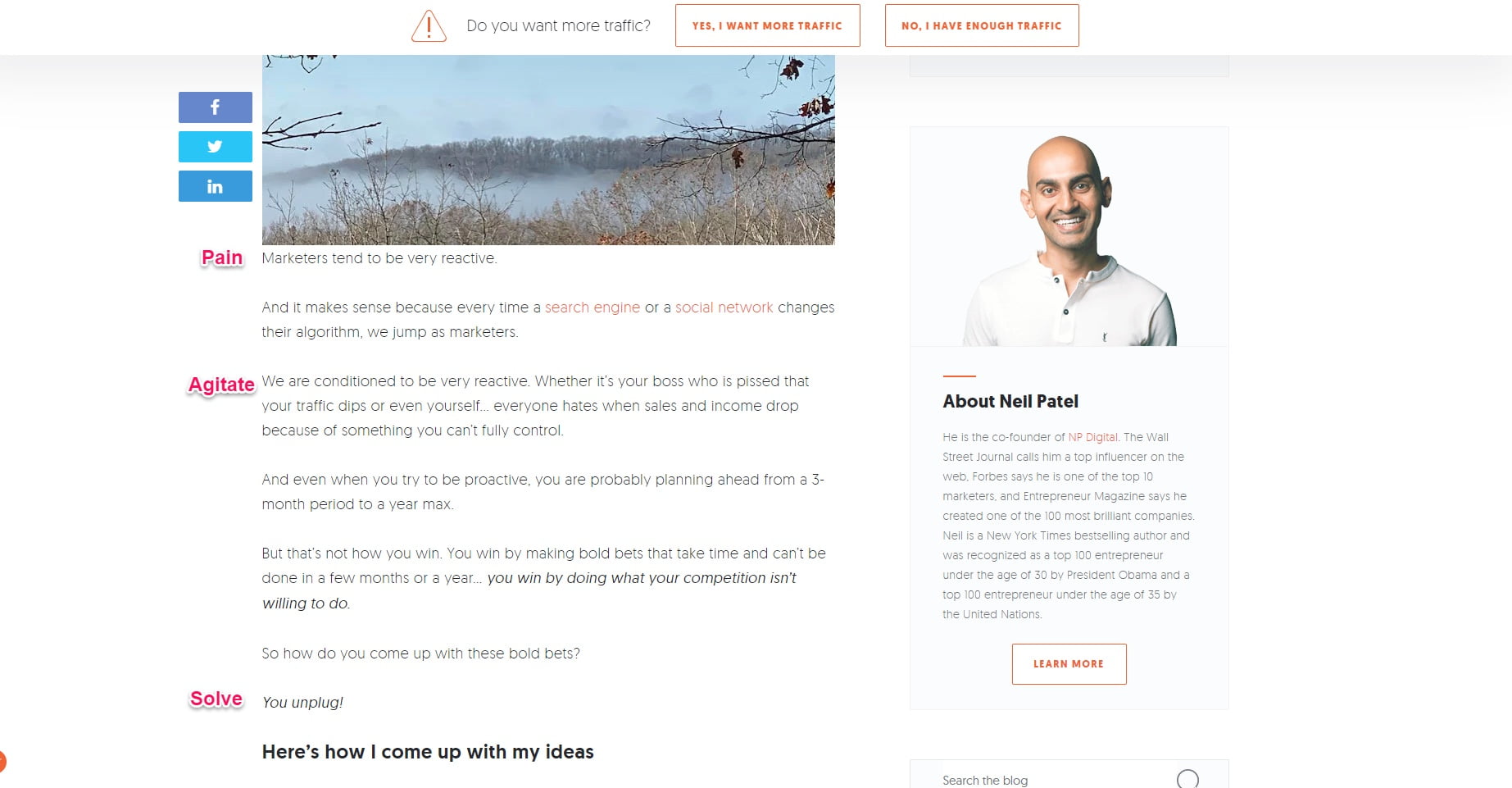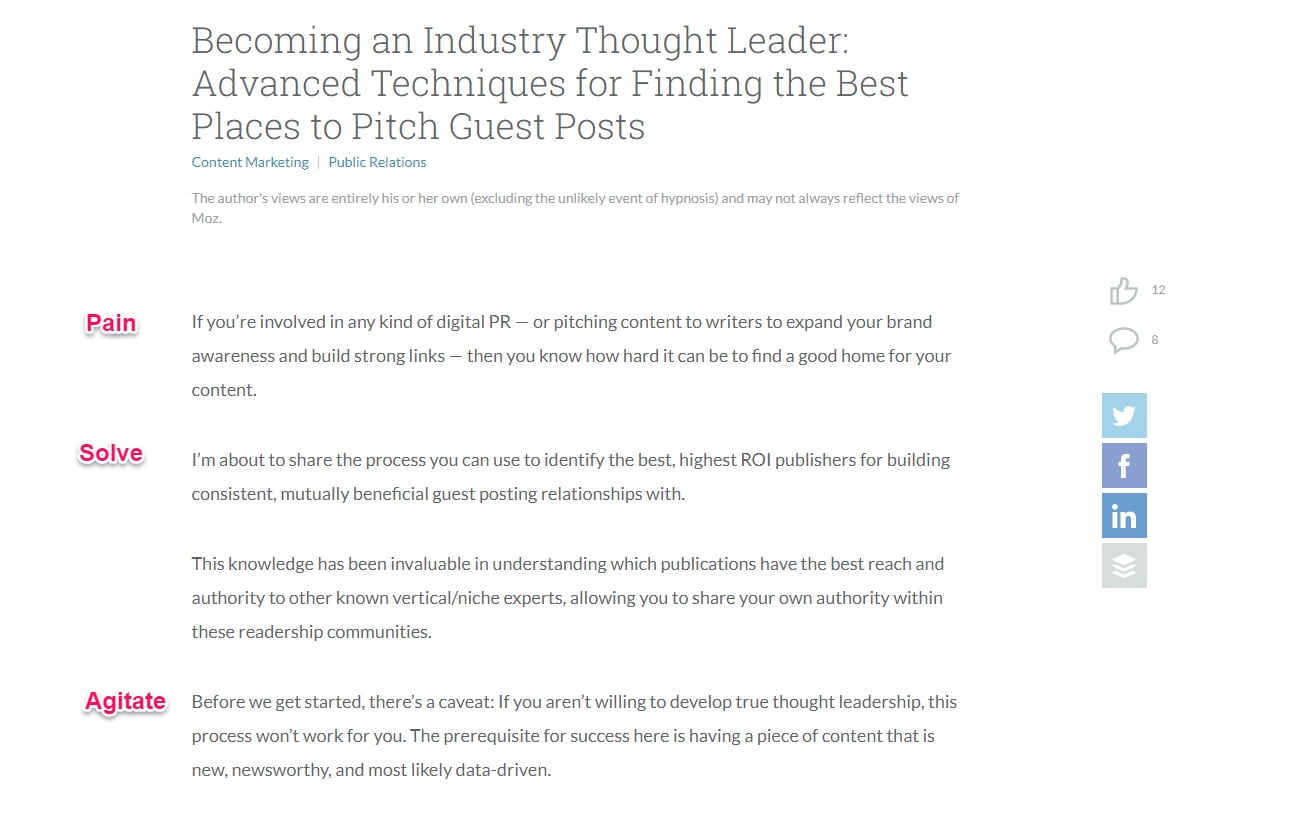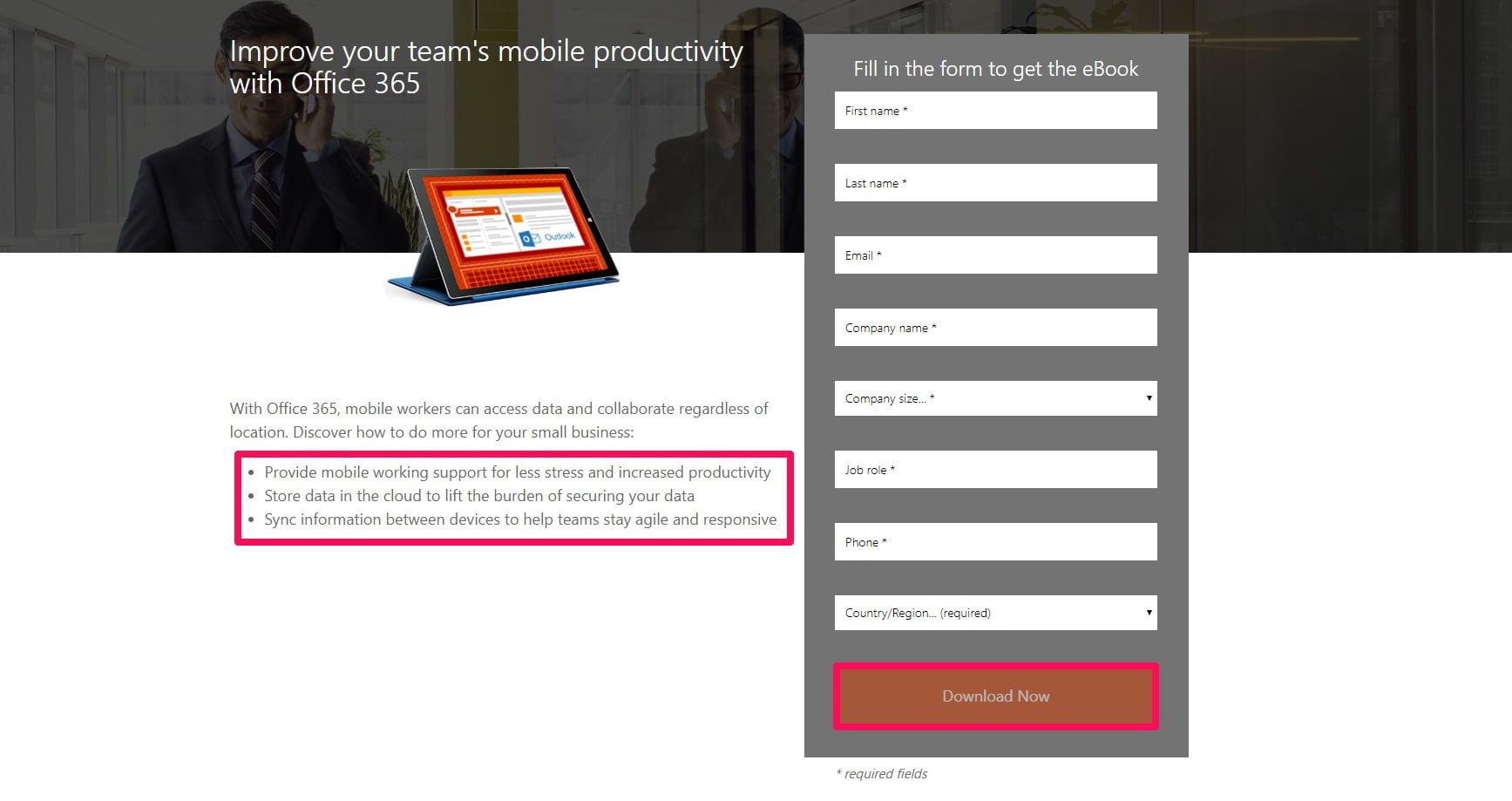Copywriting formulas are a lot like tools on Batman’s belt.
You can whip one out whenever you need to get a job done quickly.
They’re made up of a few different strategies that can be filled out to write any piece of copy efficiently.
One of which is PAS, A.K.A pain-agitate-solve.
It’s easily one of the most commonly used copywriting formulas to date.
Why?
Because it works really damn well.
But, what exactly do each of the components mean and how do you use them properly?
Look below to find out.
What is PAS?
The PAS copywriting formula stands for pain-agitate-solve.
Copywriters can use formulas like PAS to save time and energy versus brainstorming completely unique combinations.
Writing formulas use proven and effective strategies that act as fill-in-the-blank templates.
So, while many writers are using the same formula, the copy will always come out unique.
You don’t have to worry about looking like everyone else because you’re writing for a completely different audience, product, etc.
This formula can also be used for everything from blog posts to sales letters and everything in between, too.
The sky is the limit!
Enough about that, though. Let’s get into the fun stuff 👍
Breaking down the PAS copywriting formula
Ahead you’re going to learn what each of the components of pain-agitate-solve exactly mean and how to apply them when writing.
Enjoy the epic copy 🙂
Pain
Why do people buy a product?
Because they’re experiencing a problem or pain point.
Copy is emotional. Never forget that.
It’s too easy to write copy that focuses on factual information and statements, letting the real reason customers are buying run off the page.
That’s why the first part of this copywriting formula is to state the issue the reader is experiencing.
Gerald Zaltman, a Harvard University professor, once stated that he believes the purchasing process to be 95% emotional.
That’s right. Not just a little emotional, but almost entirely.
Let’s imagine for a moment your client is running a campaign for a home alarm system.
What do you think the pain point of the customer buying such a product would be? Remember, think about emotions, values, and experiences. They may include:
- Wanting to keep their family and children safe.
- Fear of getting burglarized and losing possessions.
- Interesting in keeping their home a sanctuary.
- Wishing for a peace of mind, especially if they live in a higher crime area.
- Etc.
With these things in mind, you can then mention these in the beginning of your copy.
Why?
Since it grabs their attention and gets them emotional.
Whether they realize it or not, these are the deeper reasons they’re interested in buying such a product.
Because let me tell you something…
It’s not the Bluetooth connectivity. ❌
It’s not the easy installation. ❌
It’s because it keeps them safe. ✔
That brings me to my next point.
Agitate
Once you’ve identified the pain point, it’s time to stir the pot.
You want them thinking, worrying, and rushing to find a solution.
Copywriters can achieve these by elaborating on the experiences and problems the original pain point creates.
Continuing off of the last example, we could say that not having a high-tech home alarm system will:
- Make the customer constantly worry and be preoccupied with the safety of their home.
- Put their family and children at risk.
- Increase the odds of a burglary or theft.
- Etc.
You simply need to take the original problem you’ve stated and begin digging deeper.
This gets the customer jumping out of their seat to find a solution.
Which, by the way, you just so happen to have 😉
Solve
The last part of the PAS formula is to offer a solution to the reader’s problem.
Recall that I said this formula works for any type of content or copy so how you pull this off will be different in various situations.
Let’s take a sales letter or landing page, for instance.
In that case, offering your product, service, or a lead magnet would be the solution.
However, consider a blog post like this one from Neil Patel.

It begins by identifying a simple pain point of marketers: being reactive to a boss, colleagues, and environment.
I know first hand that’s true!
Neil agitates this by talking about a pissed off boss, lacking results, and things being out of the reader’s control.
He finally presents a solution by telling readers to unplug and shows how he gets around this issue himself.
It’s as simple as that.
Pain-agitate-solve was used in a few sentences.
Nonetheless, let’s look at some more examples of it used in action. 👇
PAS copywriting examples
These are some of my favorite examples of the PAS formula in copywriting being used.
Take notes and apply them to your own copy!
1. Moz’s thought leadership article

Here’s an interesting one.
This is an article written by Moz on the topic of becoming a thought leader in any industry.
They take advantage of the PAS formula but with a twist…
The writer reverses the agitate and solution component to instantly provide relief for the reader before bringing up the problem again.
This gets the reader excited and then instantly concerned again, bouncing them around like a ping pong ball to find an answer.
You can do something similar in your next project by placing the elements of this formula in a different order.
It still uses the same techniques but makes it less predictable.
2. Microsoft’s mobile transformation e-book

Pain-agitate-solve thrives on landing pages and similar channels where a product or lead magnet is being offered.
That’s why it should be no surprise tech giant Microsoft used it on the landing page for this mobile transformation e-book.
They state common problems their customers are facing like the stress from handling mobile support and the burden of securing cloud data.
And, what do you know?
Their e-book happens to solve all of that 😎
Note how quickly the PAS formula is used in this case.
It can span across pages upon pages in something like a sales letter or used faster than Bruce Lee.
3. HubSpot’s inbound framework

This is the landing page for the HubSpot’s inbound marketing framework.
The first paragraph noted above with an arrow mentions that while marketing channels have evolved, their associated problems haven’t.
They elaborate on this by mentioning disconnected tools and difficulty measuring campaigns are typical issues. A.K.A they’ve identified a pain point and poked it.
That’s when they swing in to the rescue by positioning their free guide as a way to generate better results with marketing campaigns.
Final thoughts on the PAS copywriting model
You want to save time and energy on those grueling copywriting projects, don’t you?
Then you’d be crazy not to use a copywriting formula like PAS.
It can be used in blog posts, sales letters, email newsletters; you name it.
The first step is to clearly communicate what problem the reader is experiencing.
Then, go further. What are the symptoms and issues this problem manifests?
After this you can position your knowledge, product, or whatever else as the golden key.
How do you plan to use pain-agitate-solve?














